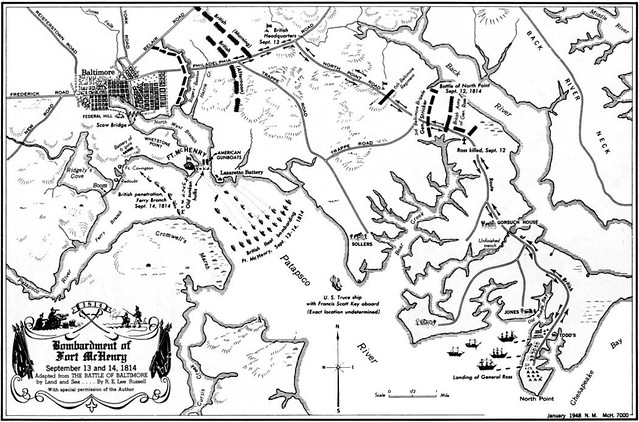
As noted, I will be giving a talk at lunchtime on Thursday, November 15 at the Talbot County Public Library in Easton.
WHAT YOU SHOULD KNOW ABOUT THE 1814 WASHINGTON – BALTIMORE CAMPAIGN
At the beginning of the War, Baltimore was fast becoming the nation's third-largest city with a population of 50,000 by 1815.
The British foreign and military policy to “chastise the savages” was aimed primarily at the Chesapeake Bay region in 1814.
The Baltimore merchants outfitted over 100 privateering vessels that took about 1/3 of all British vessels lost during the War.
It is said that the success of the privateers unleashed British wrath on Maryland and brought British fleets to the Bay in both 1813 and 1814.
A contrary view holds that the British were hard pressed in Canada and chose Bay operations to divert US resources from the northern campaigns. It was probably both.
Rear Admiral George Cockburn and Major General Robert Ross were the precursors of the 20th century “amphibious raiders.”
No other “battle” brought forward the folly of full reliance on militia defense forces during the War of 1812 as the encounter at Bladensburg, Maryland on August 24, 1814.
The success of the British raid on Washington in August 1814 was a surprise to both sides.
Ross hoped to replicate the Washington raid at Baltimore, but underestimated the resourcefulness of Baltimore commander Major General Samuel Smith and the militia he led, and led well.
Before his death near North Point, Ross was slated to command the New Orleans expedition later in 1814.
The American defense at Fort McHenry was very complex in execution. The defenders of the post, including Major George Armistead, were Baltimore heroes, but auxiliary posts and batteries played a much larger role than generally known.
Approximately 3,000-5,000 slaves were enticed by the British to run away from their masters in Maryland. Around 200 male able-bodied ended up enlisting in the British “Colonial Marines” and were trained on Tangier Island, Virginia, in the southern Chesapeake, where the British had a fort.
One side effect of the War, and its attendant blockade, was to stimulate industrial development in the United States and at Baltimore. The city grew to be both a commercial and an industrial power center.
Some claim that Baltimore, looking and acting more like Boston or New York commercially, drew the slave state of Maryland away from secession in 1861.
Adapted from the Journal of the War of 1812, Volume 13, No. 2, Summer 2010.
The Journal of the War of 1812, previously a printed subscription quarterly is now free and on line. Go to http://journal.thewarof1812.info/.
















